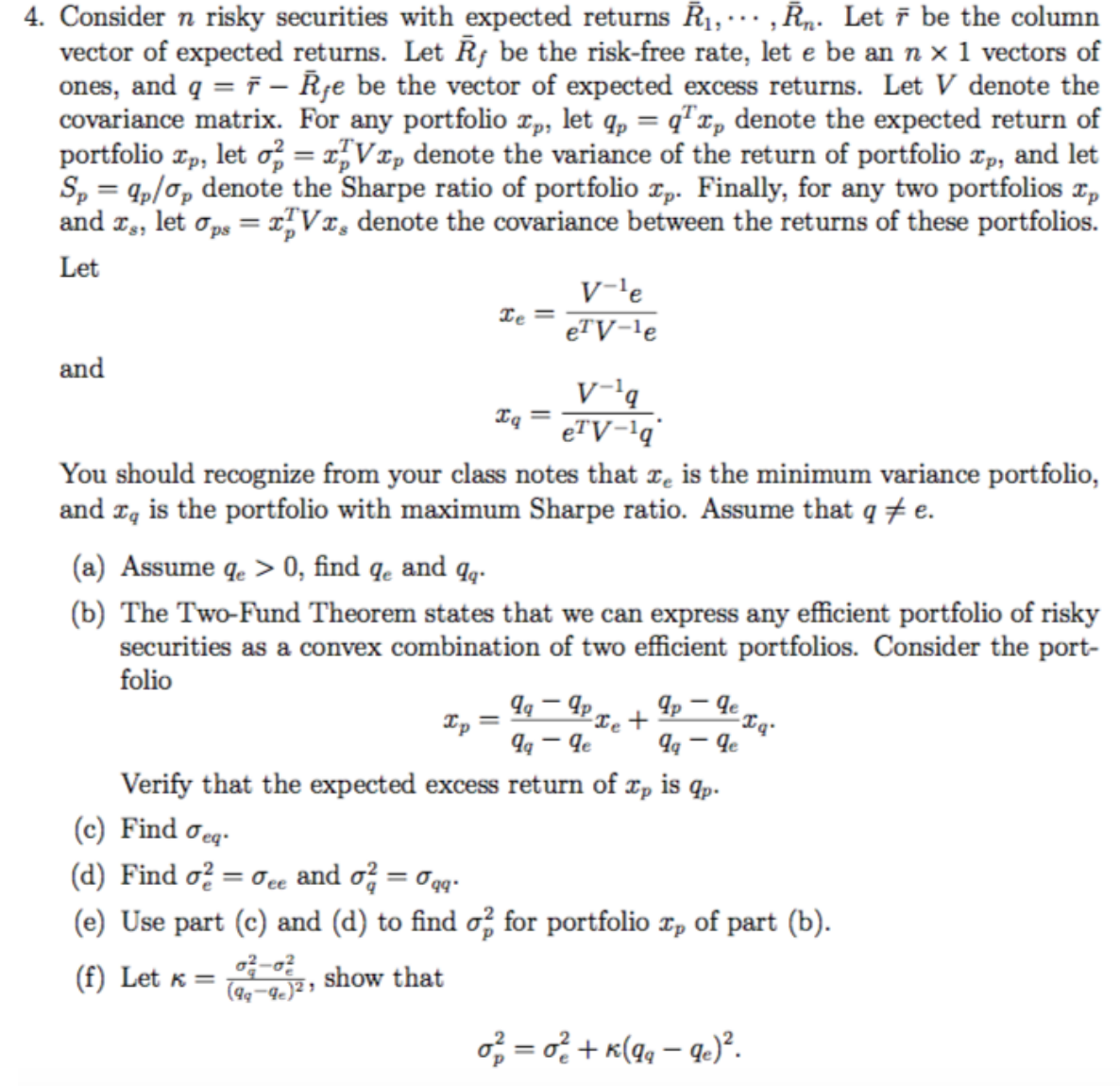Answered step by step
Verified Expert Solution
Question
1 Approved Answer
4. Consider n risky securities with expected returns R,, R. Let be the column vector of expected returns. Let y be the risk-free rate,

4. Consider n risky securities with expected returns R,, R. Let be the column vector of expected returns. Let y be the risk-free rate, let e be an n x 1 vectors of ones, and q = - Rye be the vector of expected excess returns. Let V denote the covariance matrix. For any portfolio xp, let q = qx denote the expected return of portfolio xp, let 2=xVx, denote the variance of the return of portfolio xp, and let Spqp/p denote the Sharpe ratio of portfolio xp. Finally, for any two portfolios xp and Is let ps = xVx, denote the covariance between the returns of these portfolios. Let and V-e Te = eTV-le V-q xq= eTV-q You should recognize from your class notes that x, is the minimum variance portfolio, and xq is the portfolio with maximum Sharpe ratio. Assume that qe. (a) Assume qe > 0, find qe and qq. (b) The Two-Fund Theorem states that we can express any efficient portfolio of risky securities as a convex combination of two efficient portfolios. Consider the port- folio xp Ie 9q-9p - 9q-ge 9q-ge Verify that the expected excess return of xp is qp. (c) Find eq (d) Find =ee and = qq- (e) Use part (c) and (d) to find o for portfolio xp of part (b). (f) Let k = 02-02 (9q-9)21 show that 020+(9ge). -
Step by Step Solution
There are 3 Steps involved in it
Step: 1

Get Instant Access to Expert-Tailored Solutions
See step-by-step solutions with expert insights and AI powered tools for academic success
Step: 2

Step: 3

Ace Your Homework with AI
Get the answers you need in no time with our AI-driven, step-by-step assistance
Get Started


